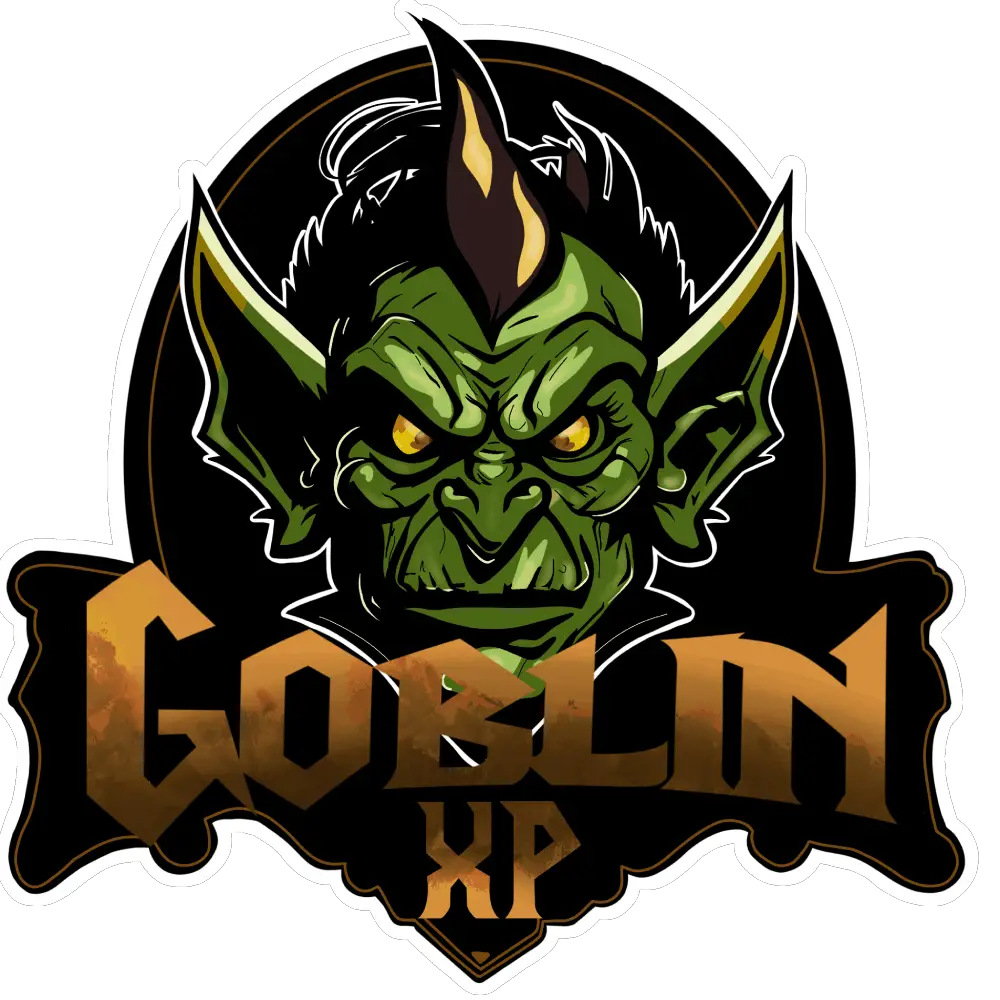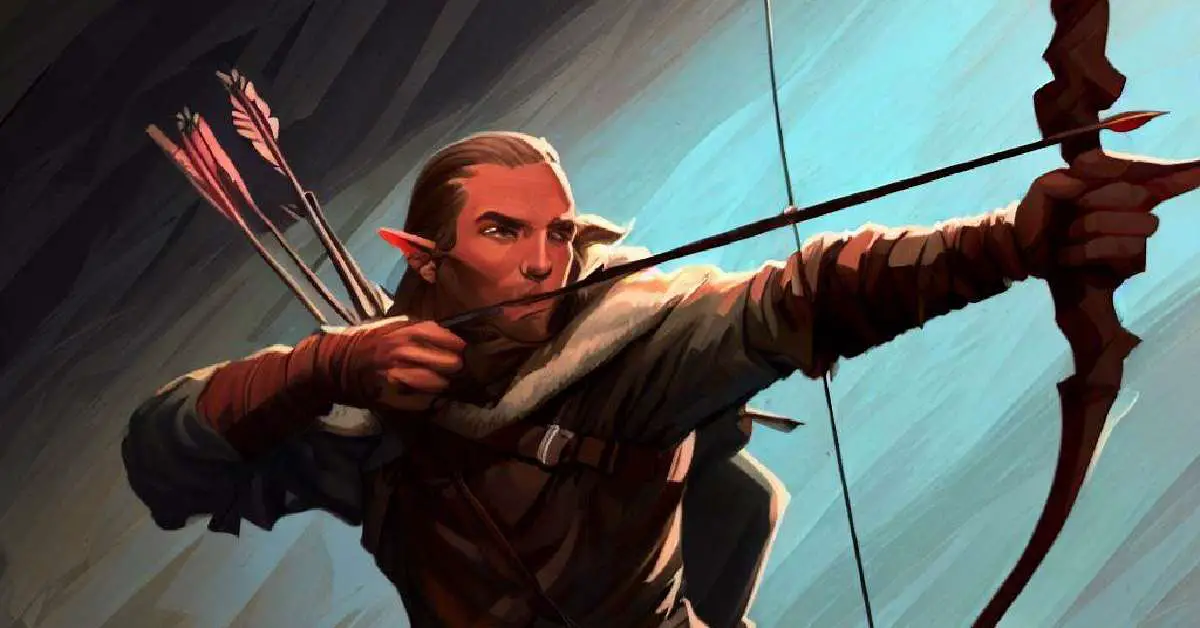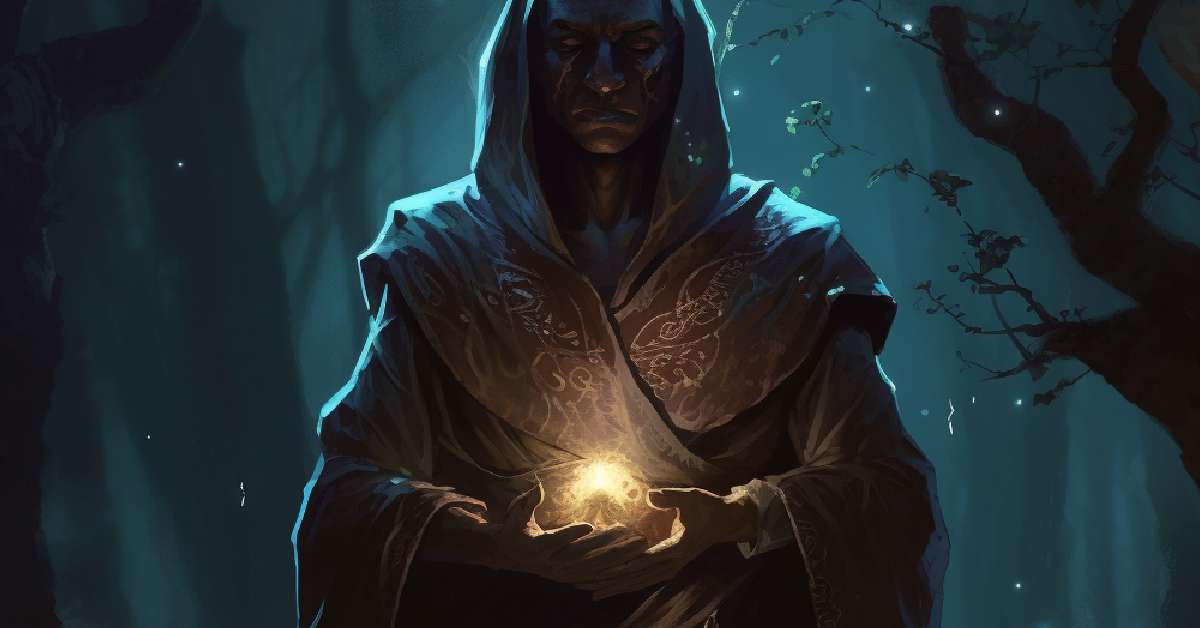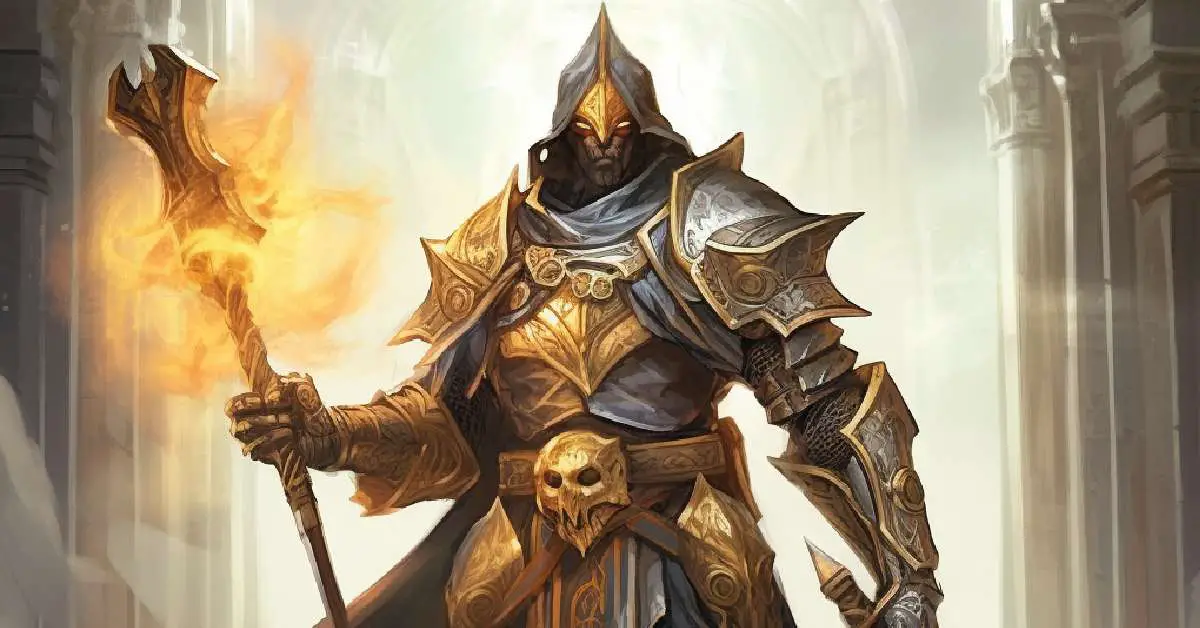
In the diverse world of Dungeons & Dragons, choosing the perfect class for your character is no easy feat. Each class is unique, offering its own set of abilities, features, and styles of play. Yet, for those intrepid adventurers who refuse to be confined to a single category, there’s the tantalizing prospect of multiclassing.
Among the countless possible multiclassing combinations, few are as compelling as that of the Paladin and Hexblade Warlock. This blend of divine justice and arcane might creates a character of unparalleled versatility, capable of withstanding heavy onslaughts while dealing devastating damage. The Paladin/Hexblade multiclass offers a unique experience, combining the Paladin’s holy smite, auras, and healing abilities with the Hexblade’s cursed weapons, spellcasting versatility, and defensive capabilities.
The decision to follow this path should not be taken lightly, though. Mastering these two diverse classes’ abilities and learning to utilize them in harmony demands both time and dedication. With that in mind, this guide serves as a comprehensive resource for understanding and mastering the Paladin/Hexblade multiclass, perfect for both seasoned and budding D&D enthusiasts. Whether you’re attracted by the potential for power, the richness of role-playing opportunities, or simply the allure of embracing something out of the ordinary, the Paladin/Hexblade combination has a lot to offer.
Why Consider a Paladin/Hexblade Multiclass?
When considering the path of multiclassing in Dungeons & Dragons, it’s crucial to understand the unique synergies between classes. The Paladin/Hexblade combination is among the most potent and versatile, promising an enriched gameplay experience that extends beyond the conventional boundaries of each class. The reasons for considering this multiclass combination are manifold, and here we discuss some of the key motivations behind this choice.
1. Balance of Offense and Defense: The Paladin/Hexblade multiclass brings together the best of both worlds. Paladins, known for their durability and supportive auras, are stalwart defenders on the battlefield. They can withstand massive damage, heal allies, and even bring them back from the brink of death. Hexblade Warlocks, on the other hand, are harbingers of doom to their enemies. They possess enhanced weapon capabilities, a variety of curse effects, and a repertoire of spells that they can use to devastating effect. When these classes are combined, the result is a character who excels at both offense and defense.
2. Versatility in Gameplay: Multiclassing as a Paladin and Hexblade gives players a chance to dabble in diverse aspects of D&D gameplay. The spellcasting capabilities of the Hexblade, combined with the martial prowess and divine magic of the Paladin, offers a wide range of strategies in combat. Moreover, the role-playing opportunities are abundant, with the character torn between their sacred oaths and their pact with a mysterious, otherworldly entity.
3. Unique Role-playing Opportunities: A Paladin/Hexblade character offers a wealth of role-playing opportunities. The Paladin’s divine oath contrasts sharply with the Hexblade’s mystical patron, creating fascinating internal conflicts for your character. Playing a Paladin who has chosen to form a pact with a Hexblade patron can lead to unique and exciting role-playing moments, adding depth to your character’s story.
4. Amplified Power Potential: Perhaps one of the most enticing reasons to consider this multiclass is the potential for power amplification. The Hexblade’s ability to use Charisma for weapon attacks, combined with the Paladin’s Divine Smite feature, can lead to devastating rounds of combat. The synergistic potential between these two classes can create moments of power that are both exhilarating and rewarding.
The Essentials of the Paladin Class
Before we can fully explore the intricacies of the Paladin/Hexblade multiclass, it’s essential to understand the fundamental aspects of the Paladin class. Paladins are divine warriors, driven by a sacred oath and fueled by their unwavering devotion to a higher power. Let’s take a closer look at what makes the Paladin class a formidable force on the battlefield.
1. The Paladin’s Divine Power: Paladins draw their strength from their unyielding faith and the divine energy bestowed upon them. Through their oath, Paladins gain access to spellcasting, powerful aura effects, and the ability to channel divine smite into their weapon strikes. This combination of martial prowess and divine magic makes them versatile combatants.
2. Sacred Oaths: Paladins swear sacred oaths that define their purpose and grant them unique abilities. These oaths, such as the Oath of Devotion, the Oath of the Ancients, and the Oath of Vengeance, determine the tenets and principles that the Paladin follows. Each oath grants additional features, spells, and aura effects that shape the Paladin’s playstyle and role within the party.
3. Aura of Protection and Aura of Courage: Paladins possess auras that radiate power and inspire those around them. The Aura of Protection grants bonus saving throws to allies within range, bolstering their resilience against magical effects. The Aura of Courage provides immunity to fear and grants the Paladin’s allies an additional saving throw to resist fear effects. These auras make the Paladin a potent support presence in battles.
4. Divine Smite: A signature feature of the Paladin class, Divine Smite allows Paladins to channel their divine energy into devastating weapon strikes. By expending spell slots, Paladins can deal extra radiant damage to their foes, making them formidable adversaries on the front lines of combat.
Understanding these core aspects of the Paladin class is crucial for successfully incorporating it into a multiclass build. The Paladin’s divine abilities, resilience, and combat prowess complement the Hexblade’s arcane powers, creating a compelling synergy that we’ll explore further in the subsequent sections of this guide.
The Mystique of the Hexblade Warlock
In our exploration of the Paladin/Hexblade multiclass, it’s essential to gain a comprehensive understanding of the Hexblade Warlock class. Hexblades are wielders of dark magic, patrons of enigmatic and otherworldly entities. Let’s uncover the mysteries and powers that lie within the Hexblade Warlock’s grasp.
1. Pact Magic and Hexblade’s Curse: The Hexblade Warlock’s power stems from a pact made with a mysterious entity known as a Hexblade. This pact grants the Warlock access to a unique form of spellcasting known as Pact Magic. Additionally, the Hexblade’s Curse feature allows the Warlock to target foes with a curse, gaining bonuses to damage rolls and critical hits against them. This curse is a potent tool in the Hexblade’s arsenal.
2. Weapon Bond and Hex Warrior: Hexblades forge a special connection with their chosen weapon through the Weapon Bond feature. This bond allows them to summon their weapon to their hand, ensuring they are always prepared for battle. Furthermore, the Hex Warrior feature grants the Warlock the ability to use their Charisma modifier for attack and damage rolls with a chosen weapon, even if it lacks the finesse property. This synergy between Charisma and weapon attacks sets the stage for the Hexblade’s martial prowess.
3. Eldritch Invocations: Eldritch Invocations provide Hexblades with unique and customizable abilities. These invocations can enhance the Warlock’s combat capabilities, provide utility, or grant additional spellcasting features. From the ability to see through magical darkness to summoning spectral blades, these invocations add depth and versatility to the Hexblade’s repertoire.
4. Pact Boon: Pact of the Blade: The Pact of the Blade feature allows Hexblades to create a magical pact weapon, enabling them to summon and bond with a weapon of their choice. This pact weapon can be transformed into any melee weapon the Warlock is proficient with, granting flexibility in combat situations. Additionally, the Hexblade can customize their pact weapon with invocations, further enhancing their martial abilities.
By embracing the Hexblade class, characters gain access to potent arcane powers, dark curses, and the ability to forge a bond with a formidable weapon. When combined with the Paladin’s divine strength and righteousness, this blend creates a character capable of weaving spells and smiting enemies with righteous fury.
Becoming a Paladin/Hexblade – The Multiclassing Mechanics
Now that we’ve delved into the distinct features and abilities of both the Paladin and Hexblade Warlock classes, it’s time to examine how to seamlessly merge these two into a potent multiclass combination. In Dungeons & Dragons, multiclassing allows characters to gain levels in more than one class, broadening their abilities and providing them with unique gameplay experiences.
1. Meeting Multiclassing Prerequisites: The first step towards multiclassing as a Paladin/Hexblade is meeting the ability score prerequisites. According to the Player’s Handbook, a character must have a Strength of 13 and a Charisma of 13 or higher to multiclass into or out of the Paladin class. To multiclass into the Hexblade Warlock class, a character must have a Charisma of 13 or higher. In essence, planning your character’s attribute distribution wisely is crucial for multiclassing.
2. Level Distribution: A crucial consideration for any multiclass character is the distribution of levels between classes. The optimal level split between Paladin and Hexblade largely depends on your desired character build and playstyle. However, a common split is Paladin 2/Hexblade Warlock X, allowing characters to access the Paladin’s Divine Smite and Hexblade’s Curse among other class features. Tailor your level distribution to best suit your character’s role within your party and your vision for their development.
3. Gaining Class Features: Multiclassing allows your character to gain class features from both Paladin and Hexblade Warlock classes. Keep in mind that some features depend on your character’s class level, not their overall level. Additionally, when you gain a level in either class, your character’s hit points increase based on the hit dice of that class.
4. Spellcasting: Spellcasting in a multiclass character can be a bit complex. Both the Paladin and Hexblade Warlock have unique spellcasting rules. Paladins follow the standard spellcasting rules, with spell slots and spells known based on their Paladin level. Hexblades, on the other hand, follow Pact Magic rules, with a small number of spell slots that recharge on a short rest. For a Paladin/Hexblade, the character has two separate spellcasting features: the Paladin’s Spellcasting and the Hexblade’s Pact Magic.
Creating a Paladin/Hexblade character requires a blend of strategic planning, attribute distribution, and understanding of class mechanics. But the reward is a character teeming with potential, boasting a unique set of skills and abilities that make for an engaging and rewarding gameplay experience. Up next, we’ll discuss gameplay strategies for a Paladin/Hexblade, offering tips and advice to help you maximize your character’s potential on the battlefield.
Paladin/Hexblade in Action – Combat Strategies and Gameplay Tips
Having established the mechanics and nuances of creating a Paladin/Hexblade multiclass character, it’s time to examine how to best utilize this potent combination in the heat of battle. Here are some strategies and tips to consider when playing as a Paladin/Hexblade.
1. Charisma-Based Powerhouse: The Hexblade Warlock’s Hex Warrior feature allows the use of Charisma instead of Strength or Dexterity for attack and damage rolls with a chosen weapon. This synergizes well with the Paladin’s divine abilities that are based on Charisma, creating a potent build that relies heavily on this single attribute. Pump up your Charisma score for maximum effectiveness.
2. Capitalizing on Curses and Smites: The Hexblade’s Curse, combined with the Paladin’s Divine Smite, can be a devastating duo in combat. Use the Hexblade’s Curse to mark your prey and then unleash a Divine Smite-infused attack for maximum damage. This is particularly effective against bosses or stronger enemies.
3. Balancing Defensive and Offensive Spells: With access to both the Paladin and Hexblade spell lists, your spell selection can be versatile. Balance your spell choices between defensive spells (like Shield and Armor of Agathys) and offensive spells (like Wrathful Smite and Branding Smite) for a varied arsenal.
4. Positioning and Aura Utilization: As a Paladin, remember to position yourself strategically to ensure your allies are within the range of your supportive auras. The Aura of Protection, in particular, can be a lifesaver in intense combat scenarios.
5. Patron Role-playing: Remember that as a Hexblade Warlock, you’ve made a pact with a mysterious entity. How this influences your character’s decisions and interactions can add a layer of complexity to your role-play. Use this dynamic to create internal conflicts, moral dilemmas, or to guide your character’s development.
These are just a few strategies to keep in mind as you explore the multifaceted gameplay of a Paladin/Hexblade character. Remember that Dungeons & Dragons is a game of creativity and imagination. While this guide provides direction, your own personal flair and inventiveness should be the driving force behind your character’s journey.
Breathing Life into Your Paladin/Hexblade – Role-playing and Character Development
The true essence of Dungeons & Dragons lies not just in combat and strategy, but in the stories we weave and the characters we bring to life. With a Paladin/Hexblade multiclass, the potential for compelling narratives is immense. Here, we explore some aspects of role-playing a Paladin/Hexblade, providing insights into creating compelling character backstories and motivations.
1. The Dichotomy of the Divine and the Eldritch: The contrasting nature of a Paladin’s divine oath and the pact a Hexblade makes with a mysterious entity sets the stage for interesting internal conflicts. How does your character reconcile their sworn duty with the pact they’ve made? This internal struggle can be a focal point in your character’s personal growth.
2. Character Backstory: Did your character start as a Paladin, guided by their holy oath, only to turn to a Hexblade patron in a moment of desperation? Or perhaps they were a Hexblade first, and their deeds led them to seek redemption through the path of a Paladin? The order in which your character took up their classes can greatly influence their backstory and development.
3. Motivations and Goals: What drives your character? Is it the pursuit of power, redemption, knowledge, or something else entirely? And how do these motivations tie into their dual-class nature? The way your Paladin/Hexblade navigates their ambitions can make for compelling narratives and character arcs.
4. Interactions with Party Members: Your character’s unique position as both a divine warrior and a wielder of eldritch magic can influence how they interact with the rest of the party. Will they be open about their dual nature, or will they keep it hidden? How will they react to characters of opposing alignments or ideals? These interactions can lend depth to your character’s persona.
5. Aligning Your Paladin Oath and Hexblade Patron: While it may seem challenging to reconcile a Paladin’s holy oath with a pact with a potentially dark entity, there can be interesting ways to align these aspects. Perhaps your Paladin’s Oath of Vengeance aligns with their Hexblade patron’s desire for retribution. Or maybe your Oath of Devotion guides your Paladin to believe they can redeem their patron. The creative possibilities are endless.
Playing a Paladin/Hexblade character offers a unique opportunity to delve into complex narratives and explore character development in new ways. Embrace the complexity of this multiclass and allow it to shape your character into a multifaceted and captivating personality in your D&D adventure. Let the dichotomy of the divine and eldritch guide your character’s path, creating a hero as intriguing in role-play as they are formidable in battle.
Building Your Paladin/Hexblade – A Step-by-Step Example
To better illustrate the process of creating a Paladin/Hexblade character, let’s walk through an example build together. This build will follow a character from Level 1 to Level 20, focusing on a Paladin 2/Hexblade Warlock 18 level split for a character who prioritizes Charisma and spellcasting, all while maintaining a solid presence on the frontlines.
Note that this is just an example build. Feel free to adapt it to suit your preferred playstyle, campaign setting, and character backstory.
| Level | Class | Ability Score Improvement/Feat | Key Spells, Class Features, and Abilities |
|---|---|---|---|
| 1 | Paladin | – | Divine Sense, Lay on Hands |
| 2 | Paladin | – | Divine Smite, Fighting Style (Defense) |
| 3 | Warlock (Hexblade) | – | Hexblade’s Curse, Hex Warrior, Spells: Shield, Wrathful Smite |
| 4 | Warlock (Hexblade) | – | Pact Magic (2 spell slots), Spells: Armor of Agathys |
| 5 | Warlock (Hexblade) | – | Pact Boon: Pact of the Blade |
| 6 | Warlock (Hexblade) | – | Eldritch Invocations: Thirsting Blade, Improved Pact Weapon |
| 7 | Warlock (Hexblade) | – | Spells: Counterspell |
| 8 | Warlock (Hexblade) | Ability Score Improvement (Charisma) | – |
| 9 | Warlock (Hexblade) | – | Spells: Dimension Door |
| 10 | Warlock (Hexblade) | – | Eldritch Invocations: Eldritch Smite |
| 11 | Warlock (Hexblade) | – | Mystic Arcanum (6th level), Spells: Cone of Cold |
| 12 | Warlock (Hexblade) | Ability Score Improvement (Charisma) | – |
| 13 | Warlock (Hexblade) | – | Mystic Arcanum (7th level), Spells: Forcecage |
| 14 | Warlock (Hexblade) | – | Hexblade’s Master of Hexes |
| 15 | Warlock (Hexblade) | – | Eldritch Invocations: Lifedrinker, Mystic Arcanum (8th level), Spells: Dominate Monster |
| 16 | Warlock (Hexblade) | Feat: War Caster | – |
| 17 | Warlock (Hexblade) | – | Mystic Arcanum (9th level), Spells: Astral Projection |
| 18 | Warlock (Hexblade) | – | Eldritch Invocations: Agonizing Blast |
| 19 | Warlock (Hexblade) | Feat: Great Weapon Master | – |
| 20 | Warlock (Hexblade) | – | Eldritch Master |
In this example, we’ve focused on enhancing the character’s melee capabilities through the Hexblade’s class features and Eldritch Invocations, while also building a robust arsenal of spells for various situations. The selected feats, War Caster and Great Weapon Master, provide benefits that align well with this character’s role as a front-line spellcaster. Remember to integrate your character’s backstory and role-play elements when choosing class features, spells, and feats.
